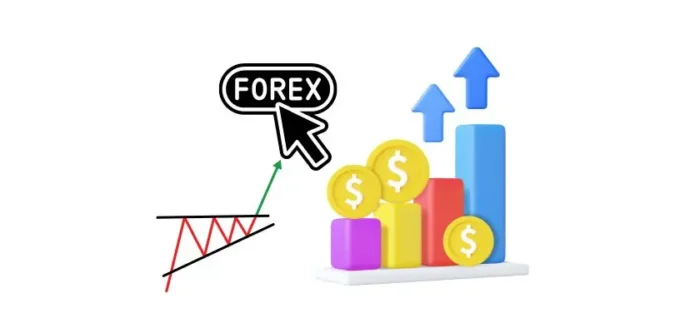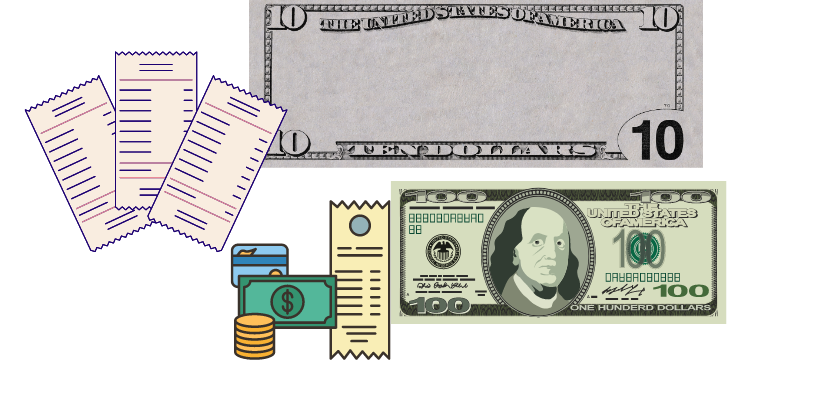In this comprehensive guide, we will provide you with a full understanding of trading forex, a financial market that significantly effects various aspects of your daily life.
Why Forex Trading Matters
From your morning coffee purchase to fueling your car or planning a vacation, Forex plays a vital role. To complement this lesson, we have a free Forex trading beginner’s guide, which we will discuss.
Understanding Forex Trading

The Global Marketplace:
The term “Forex” is a fusion of “Foreign Exchange” and refers to the foreign exchange market, the world’s largest financial market. Unlike traditional markets with physical goods, forex trades in global currencies. With a daily trading volume above 6 trillion dollars, it stands as one of the most actively traded markets globally.
24/5 Operation:
The Forex Market operates 24 hours a day, from 5 PM Sunday to 5 PM Friday Eastern Time, offering continuous opportunities for trading.
The Global Nature of Forex
Forex is a decentralised market without a central governing authority. Instead, it comprises a network involving banks, brokers, dealers, and even governments engaged in currency trading. The flexibility and extensive nature of Forex contribute to its dynamic and accessible trading environment.
Key Concepts in Forex Trading
- Currency Abbreviations
Each currency is represented by a three-letter ISO code. Some of the main currencies include USD (US dollar), AUD (Australian dollar), NZD (New Zealand dollar), EUR (Euro), CAD (Canadian dollar), GBP (British pound), JPY (Japanese yen), and CHF (Swiss franc).
- Currency Pairs
Currencies are traded in pairs, where one is bought while the other is sold simultaneously. For example, in the Pound-Dollar currency pair, the Pound is the base currency and the Dollar is the quote currency.
- Major Currency Pairs
The major currency pairs include the US dollar, reflecting the world’s largest economy. These pairs are recommended for beginners due to their liquidity and tighter bid-ask spreads.
- Understanding Pips
In forex, exchange rate changes are measured in pips, representing the smallest price move. A pipette, or fractional pip, is represented by the fifth decimal place.
- Lot Sizes
Positions in forex are measured in lot sizes, with a standard lot representing 100,000 units of the base currency. Mini, micro, and nano lots allow traders to control their position sizes more precisely.
- Bid, Ask, and Spread
Each transaction involves bid and ask prices, with the difference between them known as the spread. It represents the cost of entering the market and covers the dealer’s profit and transaction costs.
- Brokers and leverage
Individual retail traders require brokers to access the Forex market. Brokers provide leveraging, allowing traders to control larger positions with borrowed capital. While leverage expands profits, it also increases the risk of losses.
Forex Market Dynamics
- Market Liquidity
Forex operates as a vast global marketplace, offering high liquidity. The ease of entering and exiting trades makes it an attractive market for traders.
- Understanding market volatility
Market volatility refers to the speed and magnitude of price changes. High volatility implies rapid and significant price movements, indicating both increased risk and reward. In contrast, low volatility suggests calmer market conditions with smaller price variations.
Learn the Forex Trading Strategies
Traders employ various strategies in Forex, with two primary approaches: technical analysis and fundamental analysis.
Technical Analysis
Technical analysis involves studying historical price movements to identify patterns that may repeat in the future. Traders analyse trends, support and resistance levels, and chart patterns to make informed trading decisions.
Fundamental Analysis
Fundamental analysis considers wider macroeconomic and geopolitical factors influencing exchange rates. Economic indicators, interest rates, political events, and central bank statements are crucial elements in this analysis.
What are the Best Forex Trading Beginner-Friendly Platforms?
- IG: Renowned for its user-friendly platform, educational resources (IG Academy), and tight spreads.
- TD Ameritrade: Offers the powerful thinkorswim platform with extensive charting tools and educational materials.
- AvaTrade: Provides a simple interface, various demo accounts, and educational resources like AvaTrade Academy.
- Plus500: Easy-to-use proprietary platform with zero platform fees and a variety of educational resources.
- Capital.com: Innovative platform with educational app and AI-powered learning tools.
How Long Does It Take to Learn Forex Trading for Beginners?
Dedicated practice takes 6-9 months. Becoming profitable? Reaching the summit! That’s 1-2 years of continuous climbing, learning from experienced guides (mentors), and confronting market challenges. It’s a journey, not a race, but the view from the top is worth it!
Avoid These Common Mistakes
- Winging it: No plan, no profit! Make a map before buying (or selling)!
- FOMO Fever: Don’t trade every itch. Stick to your plan, not the crowd!
- Risk Roulette: Play it safe! Limit losses with stop-loss orders.
- Revenge of the Rejects: Losing sucks, but don’t chase it! Wait for a solid trade.
- Demo Dummy: Practice makes perfect! Test your skills without real cash first.
Getting Started with Forex Trading
- Master the basics: Read beginner guides, understand terms like pips and spreads.
- Pick your platform: Choose one with tutorials and a demo account (e.g., IG Academy, TD Ameritrade).
- Plan your attack: Set goals, define your risk tolerance, and choose a simple strategy.
- Practice without pain: Use the demo account to test your plan and refine your skills.
- Seek wisdom: Learn from experienced traders or online resources.
- Analyze and adapt: Track your progress, adjust your plan as needed.
- Go live, go small: Start with a tiny real-money investment.
- Stick to the script: Follow your plan, avoid emotional decisions.
- Win or learn: Celebrate successes, analyze losses to improve.
- Keep climbing: Continuous learning and practice pave the way to profit.
Conclusion and Resources
In conclusion, the Forex market offers diverse opportunities for traders. Whether utilising technical or fundamental analysis, understanding key concepts and market dynamics is essential. For those looking to delve deeper into forex trading, we recommend accessing our free forex trading beginner’s guide, available in the description below.
Feedback and Future Topics
We value your feedback. Let us know in the comments what article topics you would like us to cover next. Your likes contribute to the production of more free content on YouTube, helping us continue to share valuable insights.
Stuck on something? Let our FAQs be your roadmap to success
What is Forex Trading?
Forex trading, short for Foreign Exchange trading, involves the buying and selling of global currencies in the largest financial market worldwide.
How does Forex operate in terms of time?
The Forex Market operates 24 hours a day, from 5 PM Sunday to 5 PM Friday Eastern Time, providing continuous trading opportunities.
What are Currency Abbreviations?
Currency Abbreviations are three-letter ISO codes representing each currency. Examples include USD (US dollar) and EUR (Euro).
How are Currencies Traded in Forex?
Currencies are traded in pairs, with one being bought (base currency) and the other sold (quote currency) simultaneously.
What are Pips in Forex?
Pips, or percentage endpoints, represent the smallest price move in Forex. They are the standard measurement for exchange rate changes.
How do Lot Sizes Work in Forex?
Positions in Forex are measured in lot sizes. A standard lot represents 100,000 units of the base currency, with mini, micro, and nano lots for more precise control.
Explain Bid, Ask, and Spread in Forex Transactions.
Bid and ask prices form the basis for Forex transactions. The spread is the difference between these prices, covering the dealer’s profit and transaction costs.
Why is Market Liquidity Important in Forex?
Market liquidity in Forex refers to the ease of entering and exiting trades. High liquidity makes Forex an attractive market for traders due to minimal disruption in exchange rates.


